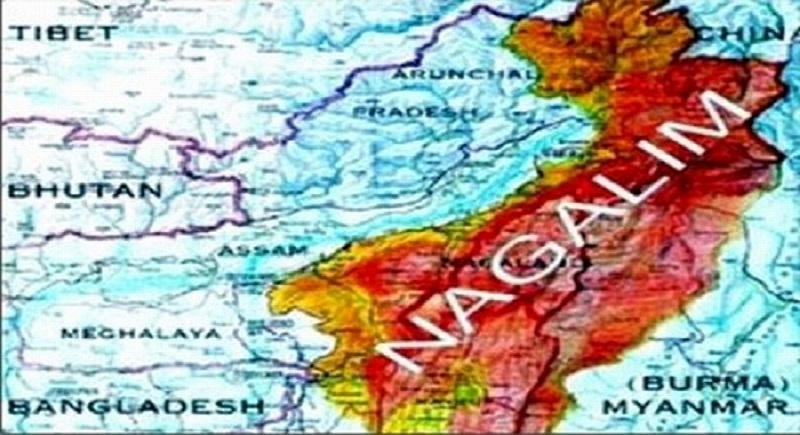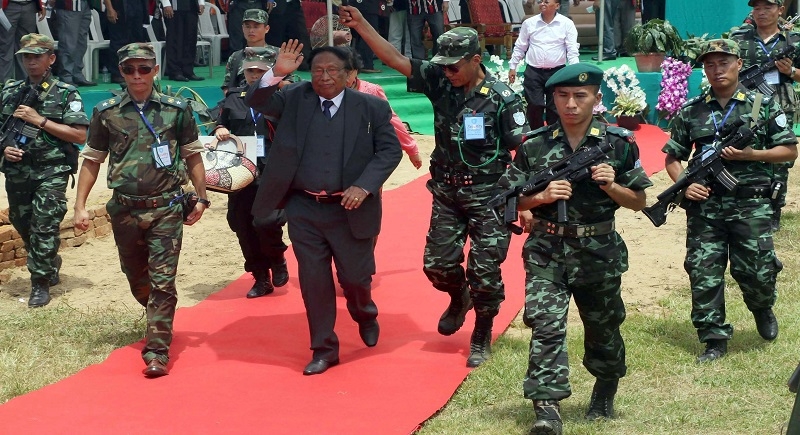After two decades of talks, Naga rebels drop Greater Nagaland demand

The proposed map of Greater Nagaland or Nagalim
According to reports the Union Government is still exploring the possibility of granting special status to Naga people within the constitution with some local variation, and some changes to the Nagas inhabiting the neighbouring states.
R N Ravi, interlocutor appointed by the Centre for NSCN (I-M)has told a parliamentary panel attached to the Home Ministry that the Nagas had stuck the idea of unification of Naga-inhabited areas with a resolute stand –‘No Integration No Solution’. However, they have now reached a common understanding with the government that boundaries of the neighbouring states will not be touched.
Instead, some special arrangement would be made for the Nagas, wherever they are. The negotiations were going on over some symbolic issues, which are sensitive to the government and the Nagas as well, and attempts are being made to reach a common understanding, Ravi said.
Subsequently, the government contemplated the details of power sharing with the Government of Nagaland or with other stakeholders. The interlocutor apprised the committee about the broad status of the negotiations and submitted that the negotiations were proceeding towards a position, where boundaries of any state will neither be changed nor altered, said the report.
The interlocutor informed that while the government was moving forward with the NSCN(I-M), the integration of the other relatively smaller armed groups with the peace talks was a challenge. The NSCN(I-M) had threatened to pull out from the talks if any other group was engaged by the Government of India. However, integration of these smaller groups was important as they were getting desperate.
The government was successful in achieving this and during the last one year, six Nagaland-based Naga armed groups had come together and were formally engaged with the peace process. However, the NSCN(K), which had violated ceasefire in 2015, was not a part of the peace process.
The committee was informed that the contours of the agreement had not been spelt out in the framework agreement. The framework agreement was just about the recognition of the uniqueness of Naga history by the Government of India, and an understanding that inclusive settlement will be within the Indian federation with due regard to the uniqueness of the Naga history.

However, the interlocutor stated that it was implied in the agreement that some special arrangement will have to be made for the Nagas. On being asked what the special arrangement will be, the committee was told that with respect to Nagaland, there is already a special arrangement. Article 371A of the Constitution makes it very clear that they are special and a special status has been accorded to them. A similar kind of status, with some local variation, and some change to the Nagas in the neighbouring states can be explored.
The committee observes that any final agreement will have some implications for the three states – Manipur, Arunachal Pradesh and Assam, where Nagas are residing in certain areas. The committee is of the considered view that any agreement that may be finally arrived at must allay the fear of the stakeholders in these states and the state governments must be kept abreast with the emerging dynamics of the talks.